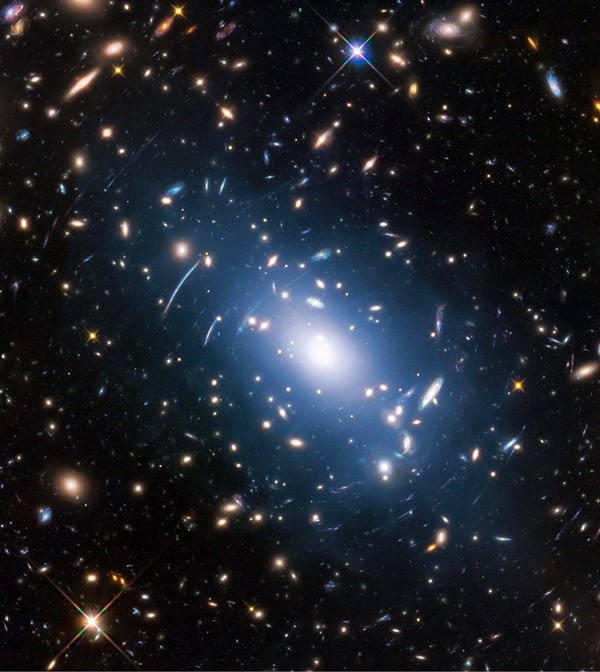Our knowledge of dark matter remains shrouded with darkness.
Projections based on the glow of nearby galaxies have led to the small amount of what we know about dark matter. However, the starlight becomes weaker the further away we gaze, making it more difficult to discern the slightest impact of this enigmatic force, as noted by ScienceAlert.
But scientists from the US and Japan have collaborated to shed light on this darkness after developing a new method examining how shadowy dark matter masses distort the cosmic background brightness.

Looking Back At The Early Universe
Researchers at Nagoya University in Japan led this scientific cooperation as they examined the characteristics of dark matter surrounding galaxies that appeared 12 billion years ago.
Their research, which was published in Physical Review Letters, raises the intriguing idea that when analyzing the early history of our universe, the basic cosmological laws we have today may differ.
It is worth noting that to examine our universe's history, we must keep looking further away to find answers. But the vastness of the cosmos would render this impossible.
According to ScienceAlert, dark matter doesn't emit any signals that could provide us with information about what it is. Most likely, it's some form of mass that resembles a neutrino but has few features.
By observing their dim light, their overall mass cannot be calculated, which includes both visible and luminous components. This lensing technique is effective enough for clusters of galaxies observed between 8 and 10 billion years ago.
However, there is less star radiation in the background to examine for distortions when we look further back.
But the researchers, together with the University of Tokyo, the National Astronomical Observatory of Japan, and Princeton University, overcame these difficulties and observed dark matter from the universe's farthest reaches by using a different source of background light - the microwaves ejected from the Big Bang.
Microwaves of the Big Bang
The scientists selected 1.5 million lens galaxies that were thought to have been visible 12 billion years ago and used information from the Subaru Hyper Suprime-Cam Survey (HSC) images to identify them.
They used microwaves from the Cosmic Microwave Background (CMB), which is the radiation leftover from the Big Bang, to overcome the shortage of galaxy light even further away.
The scientists were able to measure the microwave distortions caused by the dark matter surrounding the lens galaxies using microwaves captured by the European Space Agency's Planck satellite.
The scientists quickly discovered they had a large sample to identify the spread of dark matter after doing a preliminary investigation. They found dark matter 12 billion years in the past by combining the enormous sample of far-off galaxies and the lensing distortions in CMB.
These galaxies are visible only 1.7 billion years after the universe's creation, indicating that they were produced recently, as noted by ScienceDaily's report.
Clumpy Dark Matter
The clumpiness of dark matter was one of the researchers' most intriguing discoveries. The Lambda-CDM model, the accepted explanation of cosmology, states that minute variations in the CMB attract nearby matter by gravity to produce pools of densely packed matter.
As a result, in these crowded regions, inhomogeneous clumps develop into stars and galaxies. The group's findings indicate that their measurement of clumpiness was less than what the Lambda-CDM model indicated.
However, Miyatake said that their findings are still "uncertain," but if they are true, he said that "it would suggest that the entire model is flawed as you go further back in time."
Related Article : Scientists Solved Bizarre Mystery Of 'The Galaxy Without Dark Matter'
This article is owned by Tech Times
Written by Joaquin Victor Tacla
ⓒ 2025 TECHTIMES.com All rights reserved. Do not reproduce without permission.




